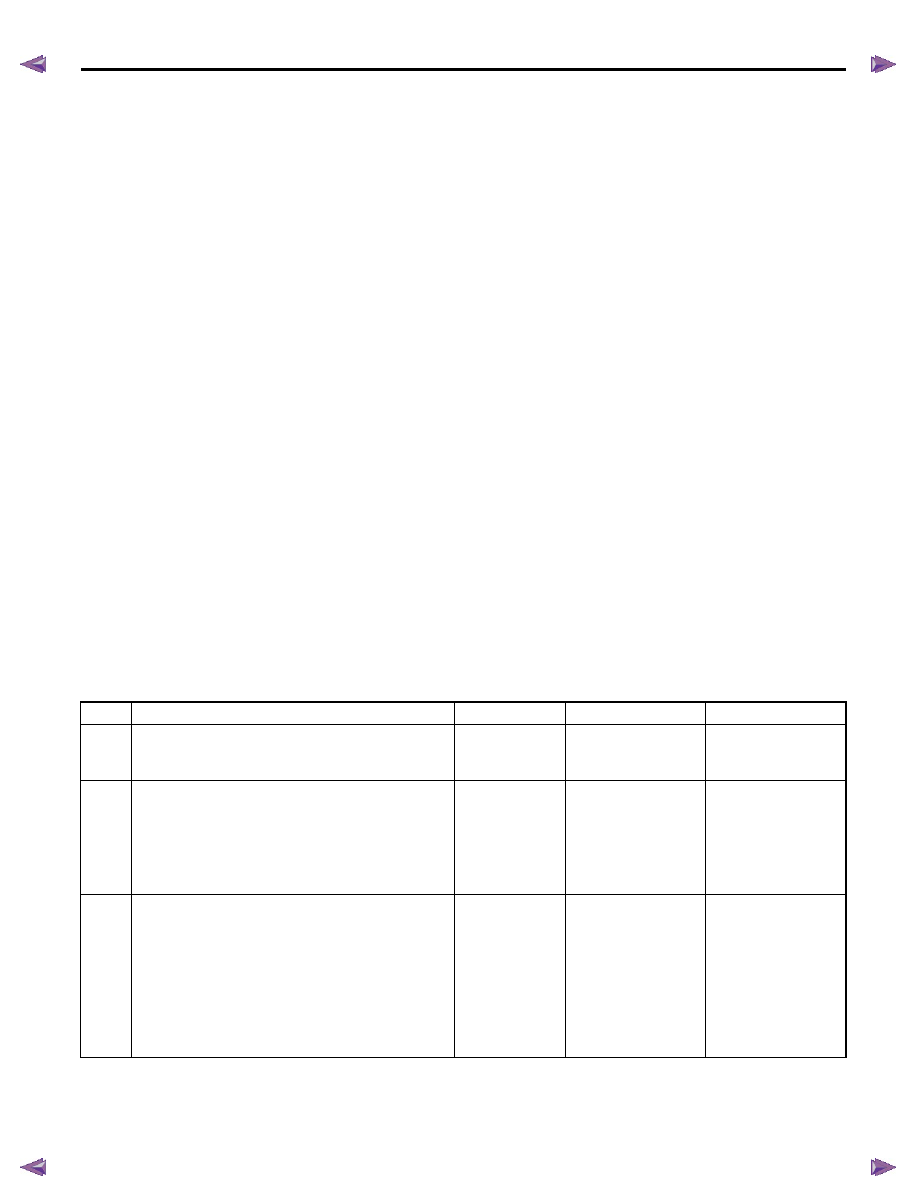Isuzu KB P190. Manual - part 422

ENGINE CONTROL SYSTEM (4JK1/4JJ1) 6E-71
DTC P0045 (Flash Code 33)
Circuit Description
The position of the turbocharger nozzle is controlled by
the ECM. The ECM utilizes a turbocharger nozzle
control solenoid valve and a boost pressure sensor to
control the turbocharger nozzles. When the engine is
not under load, the turbocharger nozzles are in an open
position, or no boost condition. When the engine is
under load, the ECM commands the control solenoid
valve to close the turbocharger nozzles, thus
increasing the boost. The ECM will vary the boost
dependant upon the load requirements of the engine.
The ECM uses a pulse width modulation (PWM) on the
control circuit to open and control the solenoid valve. If
the ECM detects an open circuit or short circuit on the
solenoid valve circuit, this DTC will set.
Condition for Running the DTC
• The ignition switch is ON.
Condition for Setting the DTC
Either of following condition is met:
• The ECM detects a low voltage condition on the
turbocharger nozzle control solenoid circuit when
the solenoid is commanded OFF.
• The ECM detects a high voltage condition on the
turbocharger nozzle control solenoid circuit when
the solenoid is commanded ON.
Action Taken When the DTC Sets
• The ECM illuminates the MIL when the diagnostic
runs and fails. Refer to DTC Type Definitions for
Action Taken When the DTC Sets - Type A.
• The ECM limits fuel injection quantity.
• The ECM inhibits pilot injection.
• The ECM inhibits cruise control.
Condition for Clearing the DTC
• Refer to DTC Type Definitions for Condition for
Clearing the MIL/ DTC - Type A.
Diagnostic Aids
• If an intermittent condition is suspected, refer to
Intermittent Conditions in this section.
Test description
The number below refers to the step number on the
Circuit/ System Testing.
4. If the solenoid control circuit between the ECM and
the solenoid is normal, the test lamp changes from
Bright to Dim when commanded from Increase to
Decrease.
Schematic Reference: Vacuum Hose Routing
Diagram and Engine Controls Schematics
Connector End View Reference: Engine Controls
Connector End Views or ECM Connector End Views
Circuit/ System Testing DTC P0045
Step
Action
Value(s)
Yes
No
1
Did you perform the Diagnostic System Check -
Engine Controls?
—
Go to Step 2
Go to Diagnostic
System Check -
Engine Controls
2
1.
Install a scan tool.
2.
Turn OFF the ignition for 30 seconds.
3.
Start the engine.
4.
Monitor the DTC Information with a scan tool.
Does the DTC fail this ignition?
—
Go to Step 3
Go to Diagnostic
Aids
3
1.
Turn OFF the ignition.
2.
Disconnect the turbocharger nozzle control
solenoid valve harness connector.
3.
Connect a test lamp between the ignition
voltage feed circuit (pin 2 of E-106) and a
known good ground.
4.
Turn ON the ignition, with the engine OFF.
Does the test lamp illuminate?
—
Go to Step 4
Go to Step 5